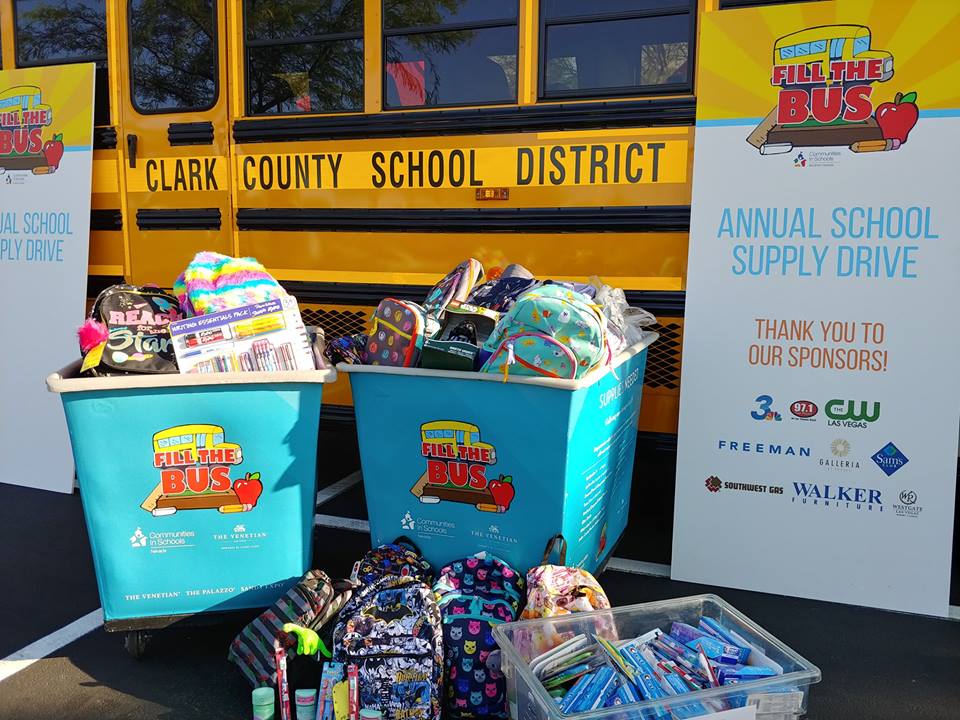5:14
News Story
When the economy and families fail to provide, schools have to step in
When employees at the convenience store a quarter mile away from Robert Taylor Elementary School notice a student shoplifting, they will sometimes call its principal to report the incident.
“They call me,” says Kimberly Basham. “Me!”
The principal is only feigning shock over the concept of being on gas station speed dial. She welcomes having the opportunity to intervene in a student’s life at an early age, before indiscretions like pocketing a candybar at a convenience store turn into more serious thefts and life-altering run-ins with law enforcement. Basham will ask the clerk or manager for more information: What’d the child look like? What were they wearing? Were they with siblings?
Then, Basham and her staff investigate.
If they figure out the whodunit, their attention turns to another question: Why?
Maybe it was because they were hungry and didn’t think they would make it on time to the free breakfast offered before instruction begins. Maybe they were acting out of anger and resentment because their family never has enough money for simple treats like so many others seem to. Whatever motive led to the bad decision down the street, Basham hopes to correct it somehow in the classroom or on the courtyard of Taylor Elementary School.
Taylor Elementary is one of dozens of schools across Nevada that has partnered with Communities In Schools to provide resources, programming and case management for students considered the most at-risk for dropping out. These schools have acknowledged that the barriers to academic access often have nothing to do with what is happening inside the classroom and everything to do with what’s happening at home or around the community. They seek to address them in specific, tangible ways that relate back to attendance, behavior and coursework — the ABCs, as staff like to call it.
“Dropping out (of school) is a process,” says Jennifer Bulloch, a Communities In Schools program director who oversees 11 Southern Nevada schools, including Taylor Elementary. “It’s all the things leading up to ‘I can’t do this anymore.’”
While dropout prevention programs are largely associated with high schools, those teenage decisions are often rooted in missed benchmarks and habits formed at a younger age. Examples: chronic tardiness, absenteeism, and not meeting widely accepted academic benchmarks (like reading proficiency by third grade) that are understood to be correlated with long-term success.
Basham, who wanted Communities In Schools at Taylor Elementary after seeing its success firsthand at a different local school she worked at, views fourth grade as a turning point: “That’s when it seems like they decide either to commit and be all-in or not.”
This community-school model advocated for by Communities In Schools suggests that to receive that buy-in from students and their parents, you must go beyond tutoring or direct academic support.
Tiffany Tyler, the chief executive officer of Communities In Schools, describes it succinctly: “We do whatever it takes.”
After doing a needs assessment, Taylor Elementary has decided that “whatever it takes” will include creating a “resource room” where Communities In Schools stockpiles items students might need — shoes, clothes, hygiene products. Basham says it’s not unusual to see a student wear the same outfit for weeks at a time without having it washed, perhaps because they are the child of a single parent who works double shifts for minimum wage and doesn’t have the resources needed to visit a laundromat.
Tyler says the nonprofit once assisted two siblings who had only one pair of shoes between them. They rotated attendance, until someone recognized the pattern and found them an extra pair of shoes.
Not having an alarm clock to wake them up has also been identified as a reason for chronic tardiness and absenteeism. Basham also requested lice kits after noticing that some families didn’t have the funds to buy them right away, which results in kids missing longer stretches of class time.
That a $15 alarm clock or a $20 lice-removal kit is what is stopping children from succeeding at school is a hard sell for some people who don’t recognize what poverty looks like in modern America.
“People are just so far removed from it,” says Tyler. “They think, ‘If (those families) just worked harder…’”
Education is often championed as the route out of poverty, and data on lifetime earnings of graduates versus non-graduates no doubt backs up that assertion. However, the education ecosystem is as much a symptom of its environment as it is a solution to it. That leaves schools like Taylor Elementary School scrambling to fill the gaps left by others, whether they be families who don’t value education, or employers who don’t provide living wages, or governments that don’t allocate funds properly.
Valley schools are increasingly relying on the services provided by groups like Communities In Schools. Since establishing itself in Nevada in 2004, the nonprofit has grown to 63 schools across the state. Taylor Elementary is the nonprofit’s first Henderson-based school.
Meanwhile, the City of Las Vegas has partnered with Clark County School District to create a program called ReInvent Schools. Like Communities In Schools, the pilot program offers academic programming and acts as a hub for additional services that might assist student and their families. There are currently 13 ReInvent Schools within the city proper.
Henderson enjoys a reputation of safe neighborhoods and schools, but the neighborhoods feeding Taylor Elementary School are an exception. Every student — 100 percent — are eligible for free breakfast and lunch. The school averages 670 students each academic year.
“This school always had a reputation and I never understood why,” says Basham. “If you pull data from the Census, it looks pretty good. But when you drill down, you see generational poverty, drug addictions, mental health…”
Basham believes upwards of 10 percent have mental health issues, a number she came up with based off known medical diagnoses, hospitalization visits for mental health issues, and so called “suicide protocols” that have gone into effect when adults at the school recognize troubling behavior.
Manual pencil sharpeners are banned at the school because students were deconstructing them to get to the razor inside. They were self harming.
Educators and the public can’t expect academic success without addressing these types of issues. This is why so-called “wraparound” services are also made available for the families of students. This includes offering referrals to mental health providers. It can also entail hosting workshops for parents on how to apply for jobs so they can better themselves economically and provide more for their family. A coordinator might help a parent obtain a free bus pass so they can get to a job interview, then follow up after the interview for a post-mortem to see how it went and talk about what could have been improved.
“Sometimes the parents are children themselves,” says Basham. “Children raising children. … Sometimes I have to tell the parent, ‘You are the parent.’ … They have their hurdles. Sometimes they’re embarrassed to share those needs. If they do share, we can help.”
Our stories may be republished online or in print under Creative Commons license CC BY-NC-ND 4.0. We ask that you edit only for style or to shorten, provide proper attribution and link to our website. AP and Getty images may not be republished. Please see our republishing guidelines for use of any other photos and graphics.




